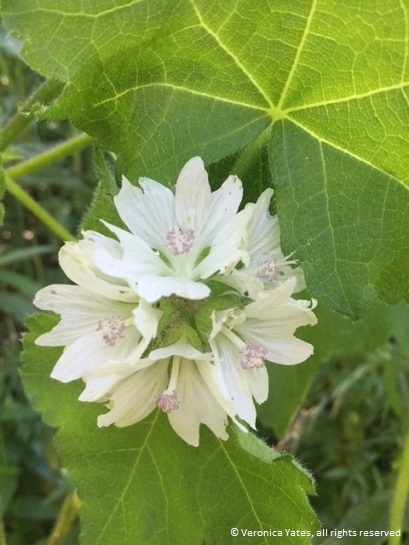Can you believe September is practically here? Another summer season is slowly winding down and we appreciate everybody enduring the heat to capture these awesome photos! There were a lot of great Online Field Survey Form photo submissions this month making it hard to choose just two. We hope you enjoy them as much as we do!

Athene cunicularia – burrowing owl
Submitted by Juan Hernandez, Hernandez Environmental Services
Juan discovered this pensive burrowing owl near the shore of Lake Elsinore in Riverside County. Burrowing owls are a California Species of Special Concern known to nest underground in burrows that are often created by ground squirrels. They are site faithful and will return to the same burrow to nest every year. These charismatic owls suffered declines in population due to development and habitat reduction, but have been known to adapt to agricultural areas, especially in Imperial County. Thank you, Juan, for this incredible photo!

Sidalcea malachroides – maple-leaved checkerbloom
Submitted by Veronica Yates, Mattole Restoration Council
This fascinating perennial, more commonly known as maple-leaved checkerbloom, was found along a cattle trail on the coastal bluffs in the King Range National Conservation Area. It is listed as a 4.2 (limited distribution in California) in the California Rare Plant Ranking system. Veronica's initial concern for the small population was that cattle activity along the trail may be harmful to the plants. However, S. malachroides has been shown to thrive in disturbed areas and is often found where logging has occurred. Regarding the cattle Veronica suggests, “perhaps their impact provides the plants space to exist.” The plant may sometimes be confused for others, but its flower helps it stand out. According to Veronica, “Had it not been for the elegantly unique white mallow flowers, I doubt we would have noticed it!” If you find yourself in the North or Central Coast regions from April to August, keep an eye out for this amazing flower. Thank you, Veronica, for all the hard work you do and the fantastic photos you send.
Do you have some great photos of rare plants or wildlife detections? Submit them along with your findings through our Online Field Survey Form and see if your photos get showcased!